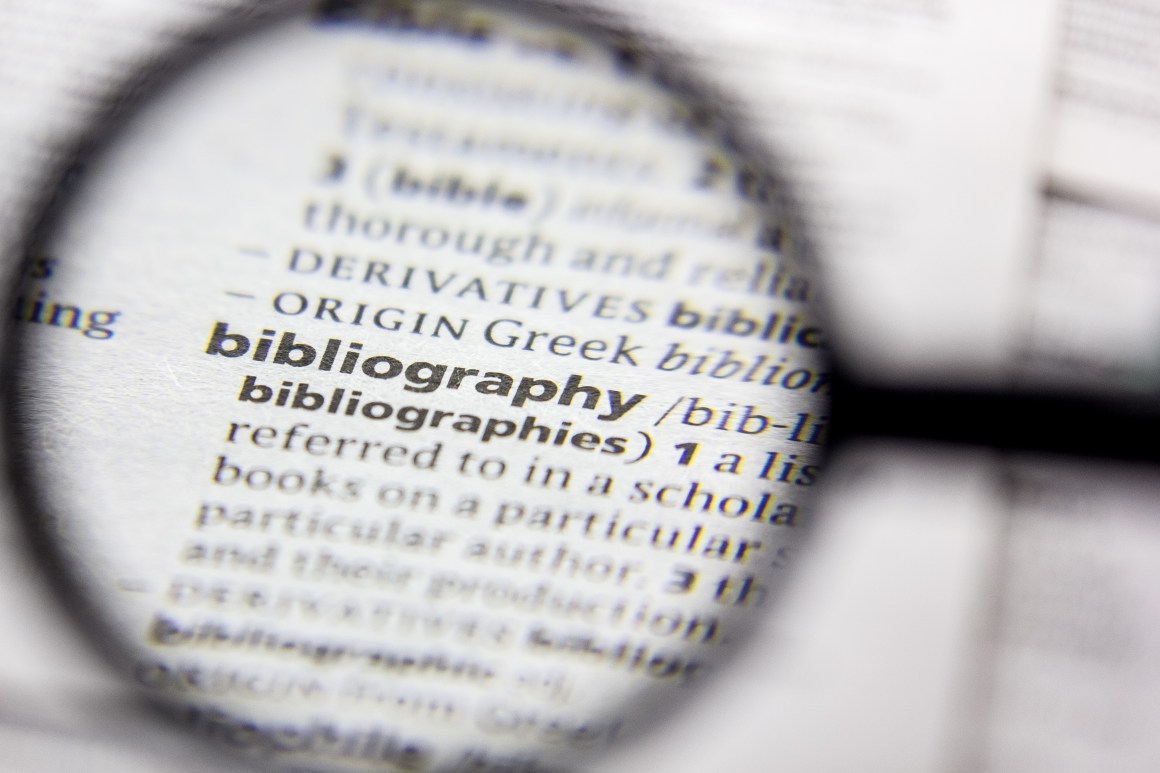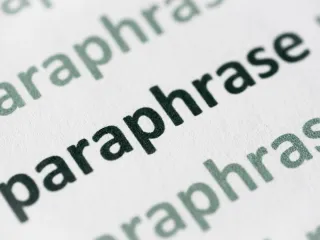Whenever you dip your toes into the research world, one term you will likely encounter is “citation.” The term is familiar as every research work needs to contain a bibliography with a list of the sources consulted during the research process. You also have to ensure that the sources you include are appropriately cited. This is where bibliographic citation comes into the picture.
But what is a bibliographic citation? And how can you ensure that you follow the best practices when citing your sources? Read on to explore the definition, examples, and best practices of bibliographic citations.
What is a Bibliographic Citation?
A bibliographic citation is a reference to a book, article, web page, or other published item that provides the necessary information for readers to locate and retrieve that source. It includes the following information:
- Author’s last name
- Date of publication
- Page numbers of your sources
- Online sources
When writing a research paper, it is important to cite sources and paraphrase to avoid plagiarism. There are different source types that require other citation formats, such as journal articles, magazine articles, online articles, electronic sources, conference proceedings, and book reviews.
You should include the author’s last name and the publication year in parentheses for in-text citations. If you cite multiple sources, list them alphabetically by the author’s last name.
For reference entries, the format will vary depending on the source type. For example, a journal article citation should include the author’s last name and initials, the publication year, the article title, the journal title, the volume number, and the page numbers.
An online source citation should include the author’s last name and initials, the publication date, the article title, the website name, the URL or HTML, and the date you accessed the source.
During citation, it is essential to provide detailed information for each source you cite to help readers locate the source. You should also ensure your research paper is accurate and credible for easy organizing.
When writing quoted information, knowing the difference between summarizing and paraphrasing is vital. If you use direct wording without changing them, it could lead to high plagiarism scores.
What is an Annotated Bibliography?
An annotated bibliography is a collection of specific notes on a source. The bibliographies include two parts: the citation and the annotation. The citation provides basic information about the source, such as the author’s name(s), publication date, title of work, and publisher.
At the same time, annotations are brief summaries or evaluations describing how valuable each information source was for your research project.
For an annotated bibliography, in-text citations should be included within parentheses after any direct quote or paraphrase from another author’s work (basic format).
You can also create a reference list with all works cited at the end of the paper. It is essential to list the citations alphabetically by last name and first initial followed by year publication information enclosed in parentheses (Publication Manual).
- Citation Example:
- Last Name, First Initial. (Year Published). Title of Book/Article/Journal/Magazine/Newspaper/etc., Publisher/City Where Published.
- Doe JF Jr., Smith AB III. (2019) Marketing strategies for small businesses: A case study approach. Wiley & Sons Inc, New York City.
Bibliographies can be an incredibly helpful tool when conducting research or writing papers. They provide detailed information about sources used in your work, which can ensure you’re citing all relevant materials correctly.
What are Endnotes?
Endnotes citation provide additional information or clarification on a specific point within the text. You can place them at the end of a page, so readers can easily locate them without disrupting the writing’s continuity.
Unlike in-text citations, which use parentheses and can be found directly after the quoted or paraphrased material, endnotes utilize superscript numbers that correspond with their respective entries in an organized reference list at the conclusion of your thesis.
To properly format an endnote, include essential details such as the author’s name, publication date, title, and publisher, separated by commas.
3 Examples of Bibliographic Citations
There are different formats for bibliographic citations, depending on the source type. Here are three examples of bibliographic citations:
1. Book Citation
Here is an American Psychological Association (APA) style book citation:
- Author Last Name, Author First Name. (Publication Year) Title. Publisher’s City: Publisher. Page numbers
In this citation, the author’s last name comes first, followed by their first name. The publication year is enclosed in parentheses, followed by the book’s title, the publisher’s city, the publisher, and the page numbers.
For example, Smith, John. (2010) The Great Gatsby. New York: Scribner. 167-250.2. Journal article citation
It is essential to consider if the book has more than one writer, as this can change the formatting of the above citation. For instance, you have to write all the writers’ names in the same format, Last Name, First Name.
2. Journal Article Citation
Here is an APA-style journal article citation:
- Author Last Name, Author First Name. (Publication Date—could be more than a year) “Article Title.”Publication Title, Vol. #. (Issue #), Page numbers
When citing a journal article, you should include the author’s last name and first name, the publication date, the article title, the publication title, the volume and issue numbers, and the page numbers. You can also input a doi if the publisher provides one.
For example, Johnson, Emily. (2018) “The Effects of Social Media on Mental Health.” Psychology Today, 35(4), 12-23.
3. Website Citation
Here is an American Psychological Association (APA-style) journal article citation:
- Author. (Date of Internet Publication—could be more than a year) “Document Title.” Title of Publication. Retrieved on: Date from Full Web Address, starting with http://
A website citation should include the author’s name, date of internet publication, document title, title of publication, and the full web address.
For example, Smith, Mark. (2020) “The Benefits of Meditation.” Healthline. Retrieved on August 15, 2021, from https://www.healthline.com/nutrition/12-benefits-of-meditation. Note that the data retrieved should correspond with the precise date you visited the website for research.
You can also use different bibliographic citations to cite the same information. Be keen on the changes, as they can be slightly confusing.
Best Practices for Bibliographic Citations
Incorporating bibliographic citations effectively is crucial in any research paper or article. Follow these best practices to ensure accuracy and consistency:
- Choose the appropriate citation style based on your field (e.g., humanities, social sciences).
- Use quotation marks for direct quotes and italics for titles of longer works.
- Include parenthetical citations with relevant information, such as the author’s last name, publication date, and page number.
- List all sources alphabetically by the author’s last name on a separate reference page.
- Avoid unnecessary abbreviations and maintain consistent formatting throughout your work.
To better understand the citation rules, it is ideal to understand the different exemplary bibliographic citations such as American Psychological Association (APA 7th edition), Chicago, or Modern Language Association (MLA 8th edition). The styles have specific formatting requirements for different types of sources of information like articles and web pages.
For more guidance on citing different sources, refer to this comprehensive citation guide on how to use citations with various styles like APA, MLA style, and the Chicago Manual of Style:
Conclusion
Every research individual can ask, “What is a bibliographic citation?” Bibliographic citations are an essential part of any research paper or publication. They provide detailed information about the sources used in the work and allow readers to locate and verify the information cited.
Annotated bibliographies and endnotes are also valuable tools for organizing and presenting sources. It is essential to follow best practices, including all necessary information, formatting correctly, and citing multiple sources properly, to ensure your work is credible and reliable.
If you need assistance with creating accurate bibliographic citations or other aspects of your marketing materials or publications, visit our website today!









